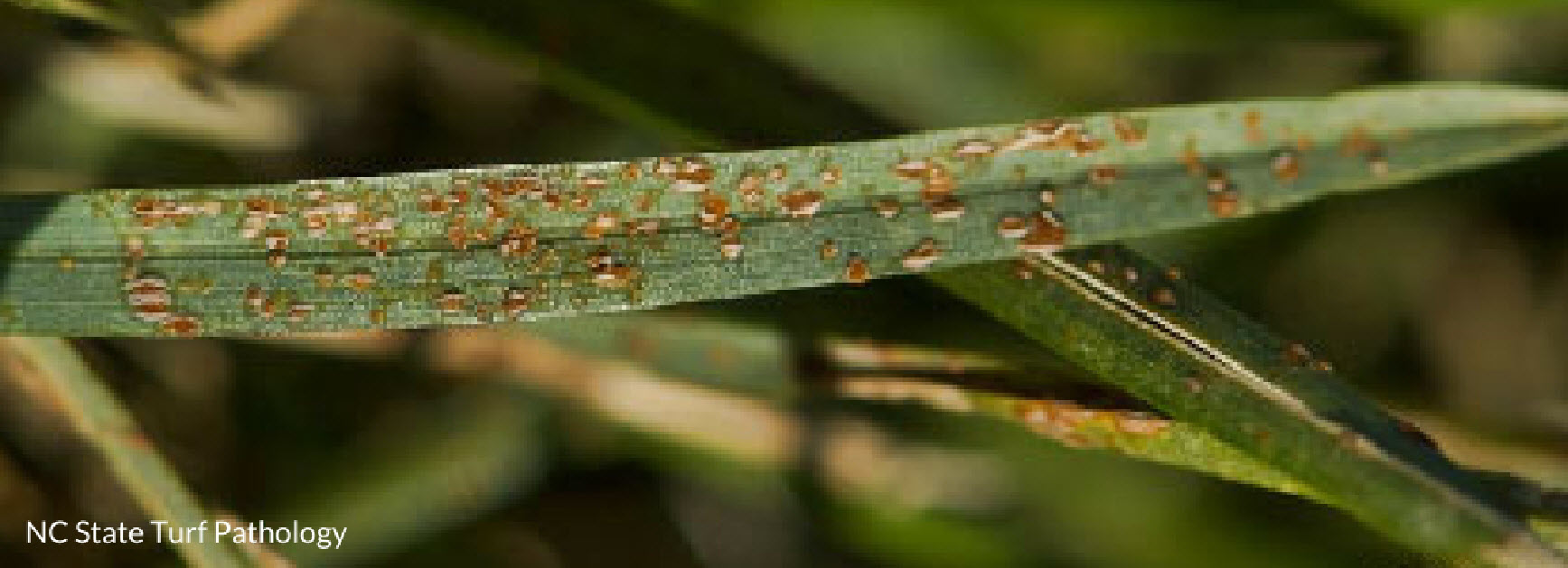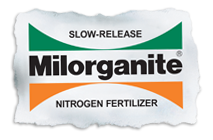Rust

Lawn Rust close up

Lawn Rust
North
Grass species affected
- Bluegrass
- Ryegrass
- Tall Fescue
Disease occurrence
- Summer through early fall
- Rust develops during times of drought and as a result of poor fertility.
South
Grass species affected
- St. Augustinegrass
- Zoysiagrass
- Rust may be observed on perennial ryegrass used to overseed lawns during the winter months.
Disease occurrence
- May through October
- Rust typically occurs due to nitrogen deficiency.
- Rust typically develops due to nitrogen deficiency and during times of drought.
Symptoms
- Small, yellow specks on leaf blades and stems that develop orange or red pustules.
- Heavily infected lawns may have an orange or reddish hue and may begin to thin out.
- The “rust” will be visible on mowers and shoes.
Management
- Maintain a regular fertilization schedule, as rust typically occurs as a result of nitrogen deficiency.
- Mow unaffected areas first and diseased areas last to avoid infecting a healthy lawn.
- Collect and dispose of grass clippings in the garbage when rust is present.
- To avoid spreading the fungus, after mowing, clean the mower blades by rinsing with water and drying with a cloth.
- Water deeply and infrequently early in the day to allow the leaf blades to dry off and not remain wet for long periods of time.

